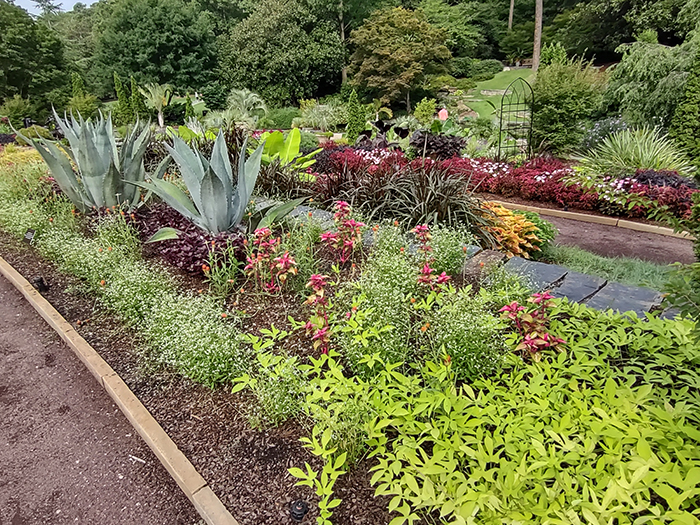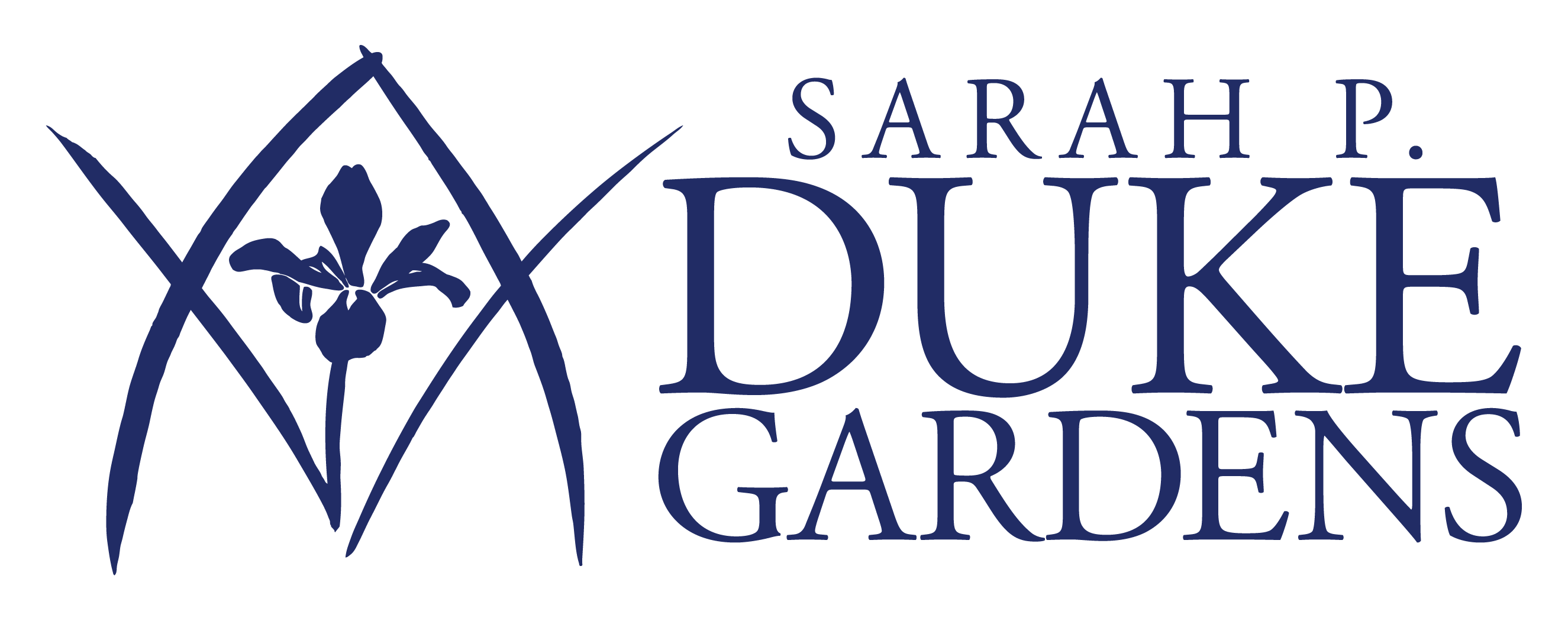
Pristine #Instagramworthy beds in the Terrace Gardens in late summer, by A Stradley.
This summer, at the 2022 Speaking of Gardening symposium in Asheville, N.C., Marianne Willburn, a columnist and gardener based in Virginia, dubbed the widespread fall gardening practice of cutting back or removing dead and fallen leaves, dried stems, spent flower heads, and drooping greens, or otherwise cleaning up a messy garden bed, a “tidiness epidemic.” Marianne lamented this popular practice, arguing it is a tedious task that many home gardeners don’t have the time or physical stamina to perform, and that messy beds, particularly during the winter months, create much-needed habitat and food for local fauna.
Did I feel called out? Yes, I did. I remember simultaneously thinking, “You don’t know me!” and, “OK, you’re right.”
Admittedly, I am guilty of tidying up garden beds, especially in the terraces, a formal space with high visitation. As justification, I tell myself it would not do at all for the beds in the Terrace Garden to appear messy in the background of so many Instagram posts tagged with #duketerracegardens or #dukegardens.
What Marianne Willburn was trying to teach us was that while tidying produces a picture-perfect effect, it can detract from, or even harm, the local ecosystem. Furthermore, Marianne encouraged us to see the beauty of that messiness, to embrace the aesthetic of decay as much as possible.
As a gardening professional, I am ready to take up the cause, and I want to invite you to join me in my endeavor to leave the garden bed as “messy” as possible for the benefit of our fauna neighbors (and also our backs and knees). Let’s try it together! It might feel awkward at first, but that’s OK! Let’s learn as we go, and trust that even a small effort can have a meaningful impact.
This fall, instead of cutting down all the dead stalks of your summer perennials and shrubs, challenge yourself to leave some of them standing. The hollow stems of many garden perennials provide overwintering habitat for solitary bees, as well as pupae and eggs of other beneficial insects (Douglas Tallamy, Wild Ones Journal vol. 23, #5, 2010). Some of these overwintering insects might provide a lovely meal for your winter birds and squirrels. Those same critters will also appreciate if you leave standing the dried seed heads of coneflower, sunflower, agastache and other summer perennials. Leaves from your trees and shrubs can also provide habitat. Giant silk moth and Luna moth pupae often overwinter in the folded up, dropped leaves of their host plant. Swallowtail butterfly chrysalis, lady beetles, beneficial predatory insects like millipedes, and small wildlife might all be found overwintering amongst the twigs and leaf litter, and just below the soil’s surface of your winter garden (Douglas Tallamy, Wild Ones Journal vol. 23, #5, 2010).
Even if your perennials and shrubs are not native to the region, they can still provide food and shelter and contribute to your hyper-local ecosystem. For example, rose hips, blackberry lily and crape myrtles provide winter food for birds and small wildlife (Gary Graves, Smithsonian Sparks, 2018).
A word of caution: there are good reasons to do a little fall tidying. Iris greens, if left on the plant or on the ground, can harbor iris borers and leaf miners. If your irises have had problems with these pests, cut and remove the spent greens in late fall. Any plant material that is hosting pathogens such as powdery mildew should be removed from your garden beds and thrown into the trash – not the compost.
Another point worth considering is the aesthetic of the winter garden. Allowing plant stems, flowers, dehisced seed pods and fallen leaves to remain in the bed after their summer glory has faded can have a beauty of its own. Every stage of a plant’s life has beauty to offer for those willing to see it. Dried stems and the tawny shine of ornamental grasses in the fall can lend texture and structure to the winter garden. On cold winter mornings, these elements will become caked with thick frost and transform you garden beds into iced wonderlands. Many perennials and shrubs are famous for their winter interest. Hydrangea flower heads stick around all winter long to provide texture. The colors and inflorescence of little bluestem, a native meadow grass, seem to become more beautiful as fall turns to winter. And the tall, swaying stalks of Joe Pye weed add height and structure to the winter garden. On a philosophical note, the aesthetic of decay can keep us grounded in the moment, helping us to appreciate the transience of life and nature.
Finally, in the spirit of self-care, let’s all give ourselves a little compassion. We’ve been doing fall cleanup and mid-summer tidying our whole gardening lives. If you find you can’t bear it, if you’re looking out your window and just can’t stand to have your garden looking like that, my colleague, Blomquist Garden horticulturist Maegan Luckett, offers a compromise. Cut the dead stalks, if you must, but cut them in long segments and leave them in place. Alternatively, you might designate parts of your garden that can remain messy in order to provide habitat. “Meet the bees halfway,” Maegan urges.
Whatever you decide, I sincerely hope you find ways to enjoy your garden through the fall and winter!
